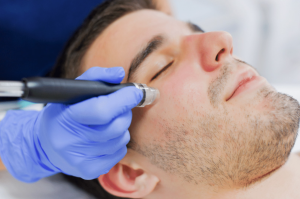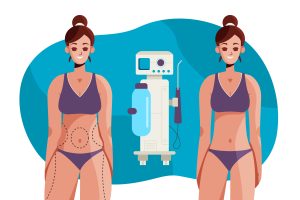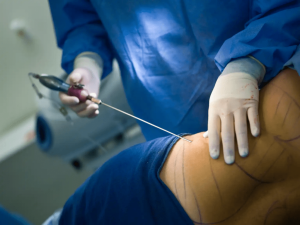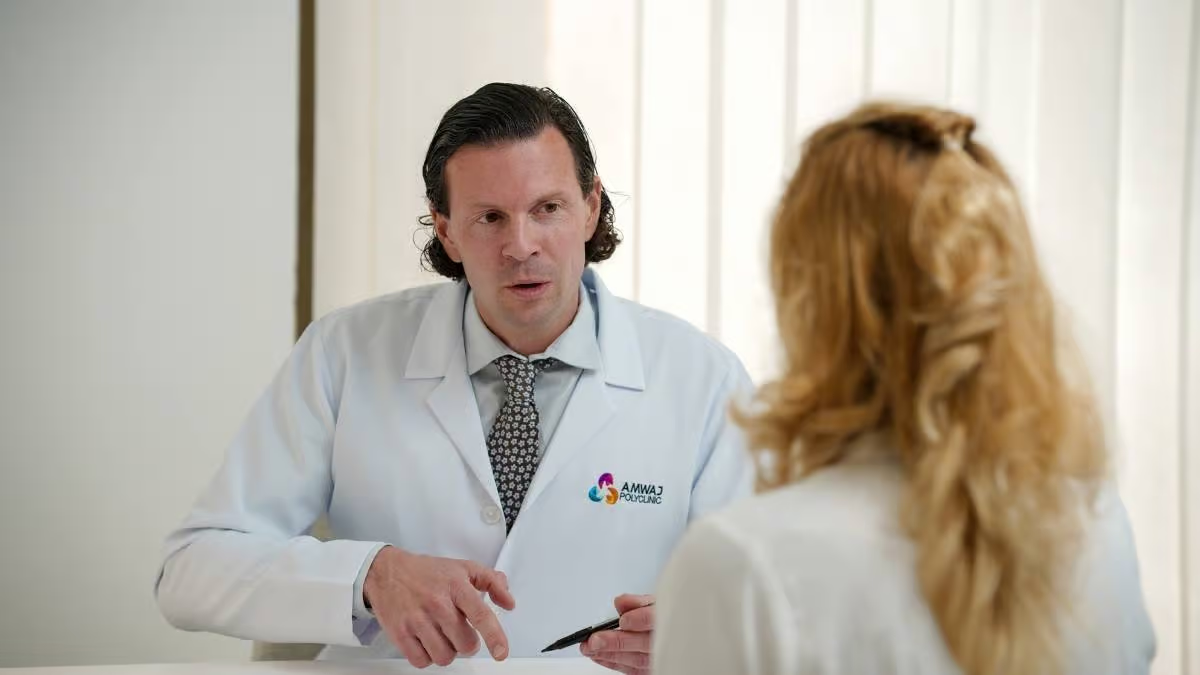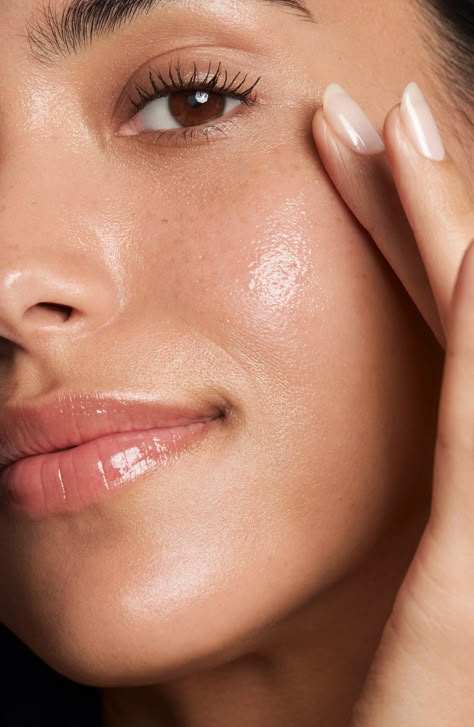Everything you need to know about lipedema: Causes, symptoms & treatment
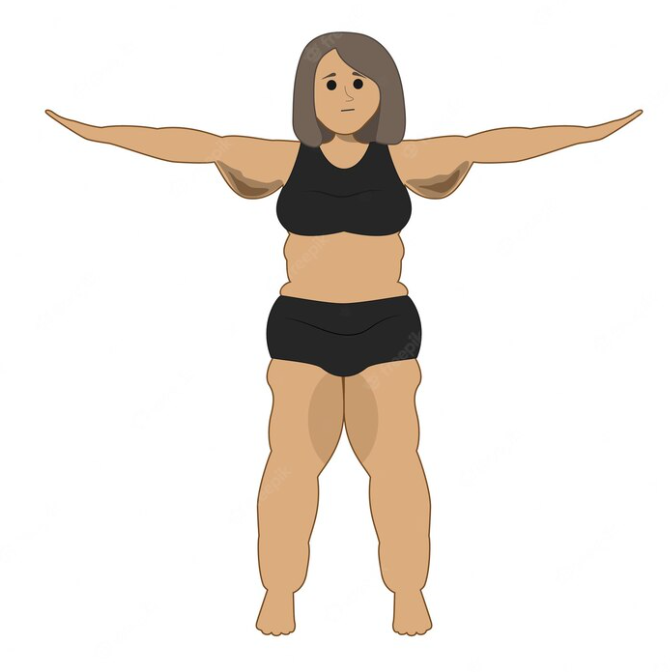
Lipedema is a chronic condition that primarily affects women and is often misdiagnosed or overlooked. It involves an abnormal distribution of fat, typically in the legs, thighs, and buttocks.
Although it shares similarities with other conditions like obesity or lymphedema, lipedema has distinct causes, symptoms, and treatment options. This blog post will delve into these, exploring this often-overlooked condition, shedding light on its unique characteristics.
What is Lipedema?
Lipedema is a medical disorder characterized by abnormal fat storage, usually on the lower body, giving the appearance of “fat legs.” Unlike typical body fat, the fat associated with lipedema is resistant to diet and exercise. It typically manifests symmetrically on both sides of the body, particularly in the legs, hips, buttocks, and sometimes the arms.
Although it does not usually affect the upper body or the face, lipedema can cause significant emotional and physical distress due to its visible impact on one’s appearance and health.
Causes of Lipedema
The exact cause of lipedema remains unclear, but experts believe it is related to hormonal imbalances. The majority of women acquire lipedema at times of hormonal transitions, like puberty, pregnancy, or menopause, suggesting a close association with changes in hormone levels.
Genetics also comes into play, as lipedema tends to run in families. Other factors that may be contributing include inflammatory processes, but there is no certain cause. Interestingly, lipedema is not associated with lifestyle choices or overeating. Instead, it is a medical condition that affects how the
Common Symptoms of Lipedema
Lipedema can be tricky to recognize, particularly in its early stages. Some of the most common symptoms of lipedema are:
Symmetrical fat accumulation: Lipedema causes symmetrical fat deposits, usually in the buttocks and legs. It does not occur in the hands or feet, which can be a differentiating point between lipedema and other diseases such as obesity.
Pain and tenderness: Lipedema fat is often tender to the touch, and affected areas may become painful or bruise easily. This contrasts with regular fat, which isn’t as sensitive.
Disproportionate body shape: People with lipedema may have a disproportionate body shape, with larger hips, thighs, and buttocks than the rest. This is often the primary cause of distress for individuals with the condition.
Fat resistance to diet and exercise: Lipedema fat is unresponsive to traditional weight loss efforts like dieting or exercise. This can become frustrating for those affected
Swelling and fluid retention: In some cases, individuals with lipedema may also experience fluid retention and swelling, particularly as the condition progresses. This can sometimes lead to a diagnosis of lymphedema, which occurs when fluid builds up in the tissues.
Bruising: Another common symptom of lipedema is easy bruising. Even minor trauma can lead to visible bruising, which adds to the emotional burden for those suffering from the condition.
Changes in skin texture: As lipedema advances, the skin over affected areas can become dimpled, looking like cellulite.
Lipedema or just Fat Legs?
One of the most common questions is whether lipedema is just “fat legs” or an actual condition. While someone with lipedema may have fat legs, there is more to it than meets the eye.
Lipedema is not simply a cosmetic issue but a medical condition that involves abnormal fat distribution, pain, tenderness, and swelling. It does not respond to diet or exercise like regular body fat, which is one of the primary reasons it is often misdiagnosed or overlooked.
Lipedema Legs or Obesity?
Another distinction to make is between lipedema and obesity. While both conditions involve fat accumulation, lipedema affects specific areas of the body and involves a distinct type of fat resistant to weight loss.
On the other hand, obesity involves overall fat accumulation and may affect the entire body. People with lipedema may appear to have gained weight in specific regions, but they are not necessarily overweight or obese overall.
Diagnosing Lipedema
Diagnosing Lipedema may be difficult because it has a similar presentation to other diseases.
A thorough physical examination by a healthcare provider is essential to assess fat distribution, bruising, and pain. Imaging tests, like ultrasound, can help rule out conditions like lymphedema. There is no specific lab test for lipedema, making early diagnosis and intervention key to managing symptoms and preventing progression.
Early detection is the cure to all problems. Book an appointment to consult with our lipedema surgeon in Dubai.
Treatment Options for Lipedema
At Amwaj Polyclinic, we provide state-of-the-art lipedema treatment, integrating advanced medical knowledge with personalized attention. Our specialists take a comprehensive approach to ensure effective outcomes that promote your overall health and wellness.
Conservative treatments
Compression garments: Compression garments can be worn to help decrease swelling and enhance circulation in affected zones. These garments are often used to manage fluid retention and prevent the condition from worsening.
Lymphatic drainage: Manual lymphatic drainage (MLD) is a type of massage that is meant to stimulate the flow of lymph and decrease swelling. This treatment can effectively reduce fluid retention and relieve discomfort associated with lipedema.
Exercise: Low-impact activities like swimming, cycling, or walking may help improve circulation, decrease swelling, and overall health. However, they may not significantly reduce the Lipedema fat.
Dietary adjustments: Diet by itself can’t treat lipedema but eating a healthy diet can overall help maintain health and avoid weight gain, which might exacerbate symptoms. Eat a balanced diet that is high in fruits, vegetables, lean proteins, and healthy fats.
Surgical treatments
For individuals with more advanced lipedema, surgical treatments may be necessary.
Liposuction for lipedema: Power Assisted Liposuction (PAL) is the most effective technique to remove lipedema fat with great aesthetic and functional results. This means that number of surgeries required can be kept low. Other methods like Water Assisted Liposuction (WAL) are not as effective because the percentage of water in sucked aspirate is low due to the continuous water jet. The procedure uses a hollow tube that is placed under the skin to suction the fat tissue. Several sessions may be needed depending on the amount of abnormal fat.
Lipedema surgery: In certain instances, a more extensive surgical solution will be required. Depending on the stage of the disease and the severity of fat deposition, lipedema surgery may require several liposuction sessions.
Other treatment options
Pain management: Pain relief medications and anti-inflammatory drugs can help manage discomfort and swelling. In certain instances, physical therapy can be advised to enhance mobility and alleviate pain.
Psychological support: Lipedema can have a profound emotional impact. Counseling and support groups can assist in helping people deal with the physical and emotional aspects of the condition.
Choose Amwaj Polyclinic for Lipedema Treatment in Dubai
At Amwaj Polyclinic, located in Dubai, we offer comprehensive lipedema treatments tailored to each patient’s needs.
Our specialized team of doctors and surgeons provides a range of services to help manage lipedema, including non-invasive treatments such as compression therapy, manual lymphatic drainage, and advanced liposuction techniques for fat removal.
Our experts are dedicated to providing you with the best treatment options, ensuring a personalized and practical approach to managing lipedema. Our specialist surgeons have experience in lipedema procedures, including liposuction, and other new-age surgical methods.
If you’re struggling with lipedema or suspect you might have this condition, contact Amwaj Polyclinic for a consultation. Let us help you take control of your health and improve your quality of life.

